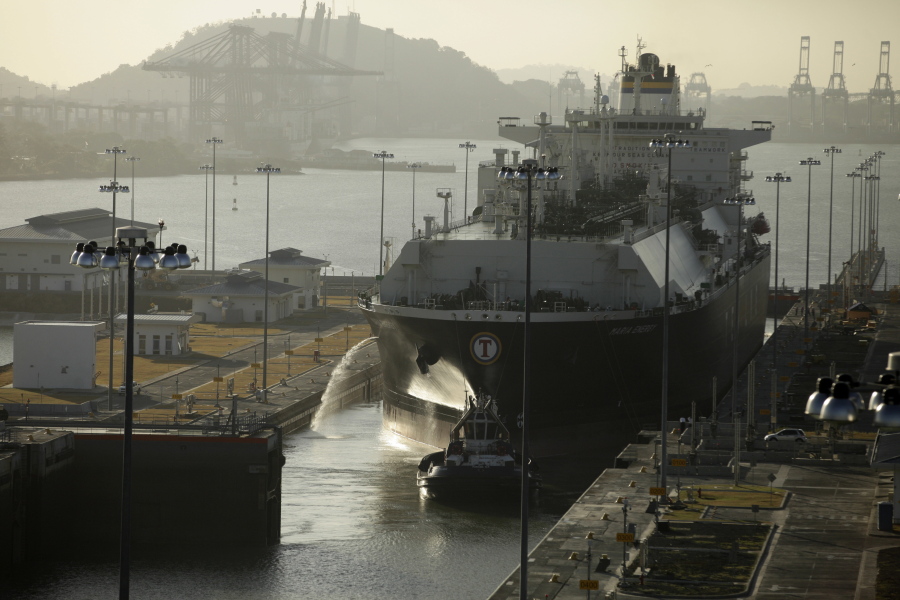COCOLI, Panama — Loaded with more than 6,000 cargo containers, the ship Ever Living prepared for the final leg of its journey through the newly expanded Panama Canal when things hit a snag: The last of the massive steel lock doors failed to open all the way.
The pilots controlling the ship and the captains of the tugboats tethered to huge vessel opted to continue guiding it through the narrowed passageway, passing nerve-wrackingly close to the side of the locks to avoid running into the stuck door.
“These are things that shouldn’t happen,” tugboat captain Mauricio Perez said. “Sometimes the only thing we can do is pray.”
A little over seven months after authorities launched a much-ballyhooed, $5.25 billion canal expansion to accommodate many of the world’s largest cargo vessels, they have yet to fully work out a significant kink: With little margin for error, ships are still scraping the walls and prematurely wearing out defenses designed to protect both the vessels and the locks themselves.
The Associated Press traveled on a recent voyage by a tugboat guiding the Ever Living through the canal’s Cocoli locks toward the Pacific Ocean. Along the way there were multiple places where the black rubber cushion defenses were visibly worn down, hanging into the water or missing entirely. In one spot a pile of dislodged bumpers sat on the side of the locks, apparently waiting to be hauled away.
Even before the canal opened in late June, tugboat pilots had expressed concern about what they said was insufficient training for maneuvers that are now required — and that are a radical departure from the previous system.
In the old locks, which are still in use, ships get tethered to powerful locomotives on both sides that keep them centered in the canal. In the new locks, that responsibility falls to the tugs, one tied to the bow and another to the stern.
Especially at first, pilots on the bridge of the cargo ships and tug operators would sometimes deliberately nudge up against the barriers as a way to properly align the vessels. That has lessened somewhat, but the battered bumpers are evidence that not all passages are smooth.
“The fears and dangers remain, although the boats are going through,” Perez said. “Throughout the entire maneuver, there are critical moments.”
The Panama Canal Authority attributed the malfunction of the lock door during the AP’s transit to a failure in a water-level sensor caused by vegetation and debris accumulated from neighboring Gatun Lake. It said the problem has been fixed.
According to the authority, between June and January there were only 15 incidents that resulted in damage to locks or ships, or about 2 percent of the 700 total transits through the new waterway. Officials say the first seven months have been a learning process but they are optimistic.
Manuel Benitez, deputy administrator of the canal, said it has been “pretty positive the way our people have been able to navigate that (learning) curve.”
And the incidents reported “have not been of a magnitude that could affect the operation of the locks,” he said. “The ships have not run aground; they continue their routes.”
Still, shipping companies have multimillion-dollar vessels at stake, and any delay due to an accident can cost them money. In perhaps the most serious incident involving the new waterway, a Chinese vessel struck a lock wall a few weeks after the June inauguration, gashing its hull and delaying its itinerary.
The Canal Authority declined to say how much money is being spent on repairing the new bumpers or whether such repairs have been forced ahead of schedule.




